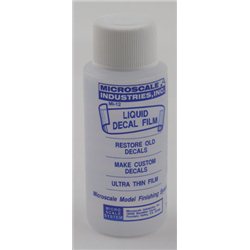There are a number of different options for attaching figures such as a horse and rider to a layout. Perhaps the...
No products
Product successfully added to your shopping cart
There are 0 items in your cart. There is 1 item in your cart.
Search Tips
Can I create my own decals?
Regardless of the subject matter, many model kits are supplied with decals that can be applied to the finished model. Additionally, there is a wide-ranging aftermarket providing additional decal options for modellers. However, on occasions, there may be a need to create bespoke decals, either because the subject matter has not been produced or perhaps to replace old or damaged decals that would be otherwise difficult to source.
Luckily, there are a number of options available when it comes to creating bespoke decals. One option is to use specific decal paper. This is one area where the world of modelmakers overlaps with the realms of other general hobbyists. A number of companies have produced ink-jet water slide decal paper. The required subject can be created on a PC or laptop in either a word processor or a specific image manipulation program. Once produce this can then be sized accordingly and printed. It then acts like a normal decal, in that brief immersion in water will enable the decal to be transferred onto the model from its backing sheet.
Additionally, we can produce decals using Liquid Decal Film by Microscale. This can be brushed on scraps of unused decal paper and the appropriate design can be applied by pen or brush as required. Once the visual medium has dried a final coat of Liquid Decal Film can then be applied to effectively produce a watertight seal for the decal. Once the film has dried it can then be cut to shape and applied as per a normal waterslide decal.
Click here to receive the tips weekly in your mailbox. You can unsubscribe at any time.









